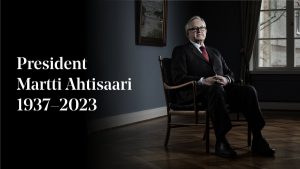Giorgio Parisi is an Italian theoretical physicist born on August 4, 1948. His research primarily focuses on quantum field theory, statistical mechanics and complex systems.
Some of his significant contributions in the field of science are the QCD evolution equations for parton densities, obtained with Guido Altarelli, known as the Altarelli–Parisi or DGLAP equations, the precise solution of the Sherrington–Kirkpatrick model of spin glasses and the Kardar–Parisi–Zhang equation describing dynamic scaling of growing interfaces. He is also known to have conducted a study on whirling flocks of birds.
Also Read | DNA sequencing pioneers win 1mn euro tech ‘Nobel’ prize
Giorgio Parisi graduated from the University of Rome La Sapienza in 1970 under the supervision of Nicola Cabibbo. He was a researcher at the Laboratori Nazionali di Frascati between 1971 and 1981. Furthermore, he has also acted as a visiting scientist at the Columbia University from 1973 to 1974, Institut des Hautes Études Scientifiques from 1976 to 1977, and École Normale Supérieure between 1977 and 1978. Georgio Parisi was a full time professor of Theoretical Physics from 1981 until 1992 at the University of Rome Tor Vergata. However, he is currently the professor of Quantum Theories at the Sapienza University of Rome. The physicist is also a member of the Simons Collaboration “Cracking the Glass Problem”.
Giorgio Parisi has been awarded the 2021 Nobel Prize in Physics jointly with Klaus Hasselmann and Syukuro Manabe for groundbreaking contributions to the “physical modeling of earth’s climate, quantifying variability and reliably predicting global warming”.
Manabe and Hasselmann were cited for their work in “the physical modeling of Earth’s climate, quantifying variability and reliably predicting global warming”.
The second half of the prize was awarded to Parisi for “the discovery of the interplay of disorder and fluctuations in physical systems from atomic to planetary scales.” The award winners were announced by Goran Hansson, secretary-general of the Royal Swedish Academy of Sciences, on Tuesday.





